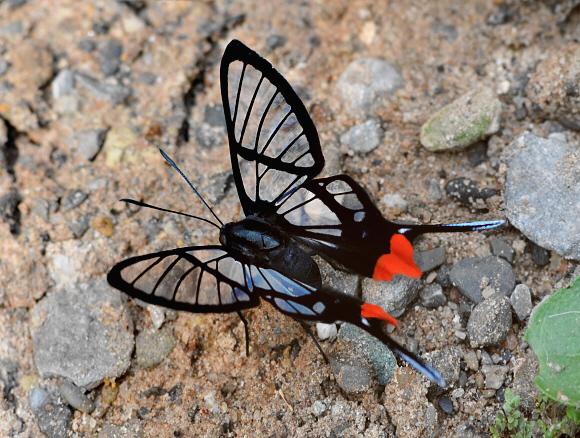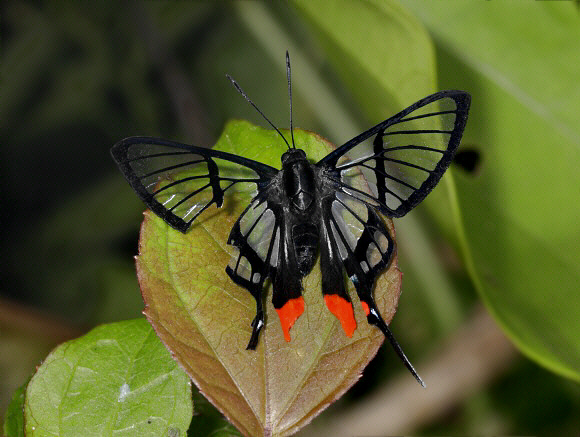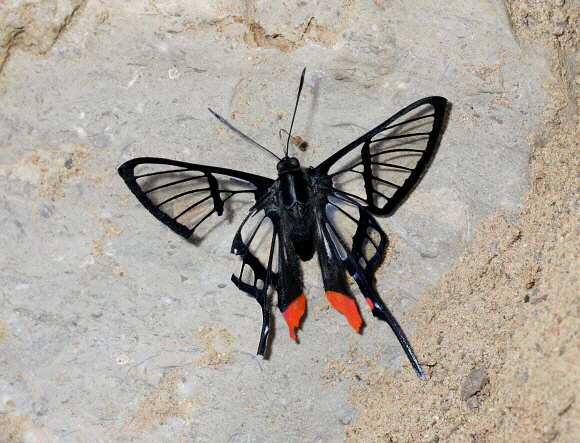 Chorinea octauius, Satipo, Peru – Peter Maddison
Chorinea octauius, Satipo, Peru – Peter Maddison
Introduction
The genus Chorinea comprises of 8 species. They look very much like miniature swallowtails, with transparent wings marked with black veins. In all species the thorax is virtually devoid of “hair” and the palpi are extremely short. All Chorinea species have the same basic wing pattern but vary in the configuration and extent of the red markings on the hindwings.Chorinea octauius is found in Colombia, Venezuela, Surinam, Ecuador, Brazil and Peru.
Habitats
This is a rainforest species found at altitudes between about 100-1000m, usually in the vicinity of streams. Like all Chorinea species it is very localised and difficult to find.
 Chorinea octauius, Satipo, Peru – Adrian Hoskins
Chorinea octauius, Satipo, Peru – Adrian Hoskins
Lifecycle
The eggs are pinkish and finely sculptured. They are laid in neat batches of up to about 160, on the underside of leaves of the foodplants which include Prionostemma ( Hippocrataceae ) and Maytenus ( Celastraceae ).. The newly emerged larvae feed gregariously, nibbling at the cuticle on the upper surface of the leaves. After the 3rd instar they feed solitarily, each larva living within it’s own leaf shelter. The pupa is also formed within a leaf shelter.
Adult behaviour
The butterflies spend most of their time in the canopy, but have been observed to congregate in groups of 5-12 on the underside of leaves at a height of about 5m. At ground level they are almost always seen singly. They fly in full sunshine, and can occasionally be found mud-puddling at the edge of streams. If molested the butterflies exude a yellow fluid from a gland on the thorax.

Chorinea octauius, Satipo, Peru – Adrian Hoskins
